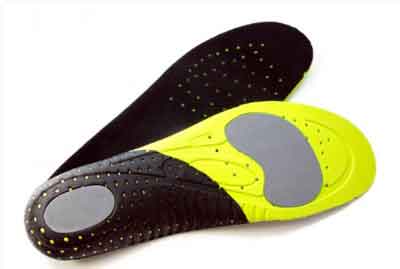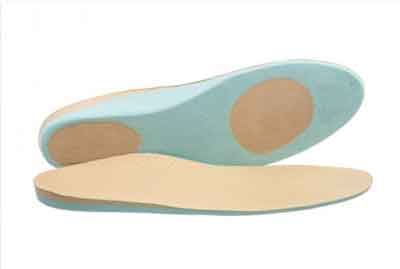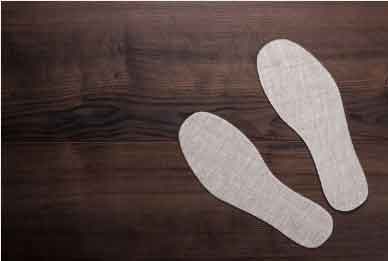There is nothing bad about wearing shoes without insoles. Doing so occasionally wouldn’t do much serious damage. However, it is not a very good idea to wear shoes without insoles all the time unless the shoe is slightly smaller and will fit better without the insole.
While most people consider insoles as the cheapest thing a manufacturer includes in a shoe package, the insoles are built for two main purposes: Support and comfort. The insole is meant to cushion your shoe and to keep your foot separate from the inseams.

So, if your foot is still comfortable without insoles, and you are not breaking the shoe, I see no reason why you shouldn’t remove the insole if you wish to.
I realize that I see a lot of people selling and wearing shoes without insoles. Many people are also thinking of the possible harm that may be involved in wearing shoes without insoles.
Read on to find out more about all you need to know about wearing your shoes with or without insoles.
Why do people wear shoes without insoles?
There are quite a number of reasons why people wear shoes without insoles. These reasons can be explained from the view of hikers, sprinters, tennis players, and normal people who wear shoes.
First of all, insoles are recognized as an important aspect of any brand new shoe because of their ability to cushion and protect your feet. This explains why there are runners who do not enjoy their sport without wearing shoes with insoles.
Why then do people want to wear their shoes without these insoles? The first reason I discovered has to do with the strengthening of the feet
Even as much as you may not know, you may feel the need to wear your shoes without insoles because your feet are given the chance to work harder without them.
For strength and balance
When you wear shoes without the insoles, every part of your feet will, in a way, regain its balance and strength on its own. Your feet will learn not to be dependent on supporting insoles, hence giving strength to the balls of your feet, arches, and heels in managing your body weight.
You may not practically know all this, but the benefit that it brings, which will people are aware of, makes them want to wear shoes without insoles.
You will feel lighter while running
For runners, they will tell you that they feel lighter when running without insoles. This is because insoles are also added weight to any shoe. Without it, there is no weight to pull one down.
If you are one who runs, wearing shoes with insoles will not make you run as fast and as strong as when you run with shoes without insoles.
To prevent smell
Lastly, (I am so on this table!) One underlying reason why people wear shoes without insoles is to keep the shoe from smelling. Yes, there are some insoles that are too thick. While they have the comfort and support benefit, they tend to make your shoe smell when worn often without regular washing.
So, most people for this reason would rather choose to remove the insoles and wear socks.
Ways to remove insoles from your shoes

Now that you know that wearing shoes without insoles occasionally will not do much serious damage, and there are reasonable factors that can require you to wear shoes without insoles, the next thing is how do one remove insoles from shoes without damaging the interior of the shoe or the base of the shoe?
It is simple. Insoles are made of a material that is often slightly or more heavily cushioned for comfort, and some even have a deodorizer to reduce foot odor. So if you want to take them out, you are likely going to discover any of these three things:
- The insoles are simply placed on the base of the shoe
- The insoles are glued
- The insoles are sewn!
Whatever the case is for your insoles, there is a way to go about removing it.
General ways to remove insoles from shoes
If the insoles are simply placed on the base of the shoe, it is much easier to take them out.
- First, reach into the shoe with your hand
- Take the insoles from the heel and pull them towards yourself
- In this way, you will be able to remove it at least partly, to discover what was used to stick it to the shoe.
- If nothing was used, you can simply pull the insole out.
But when you see that the material used in holding the insole to the shoe is glue, you should use the appropriate tool to take the insoles out. So how do you remove glued insoles?
How to remove glued-in insoles
Like I mentioned earlier, you first ensure that the insoles are only glues and not sewn in (some manufacturers adhere the insoles with both gluing and sewing),
- Once you see that it is only glue and there is no trace of tacking, then you need to heat it up to soften the bond of the glue.
- You can either use a hairdryer, oven, or heat gun to accomplish this, but I advise that you use an ideal hair dryer.
- Use the hairdryer on the insole and once it is heated really well, you can get quite a bit of insole.
- At this point, you can lift up the insole just by bending and flexing the sole of the shoe.
- When you get to lift up the heel, use a spoon or chisel to carefully pry up the rest.
- If you notice the insole flake, or still hard to take out, you need to apply more heat.
- But, you must be very careful not to overheat or overcook the shoe so it doesn’t get damaged.
How to remove sewn-in insoles
Some shoes come with insoles that are tacked on. If this is the situation, you will not need a hair dryer or oven.
- What you need to do to remove the sewn insole is to insert a flat screwdriver underneath the insole to pry up the tacks.
- After you have taken this proper step to loosen the tacks, you can now pull the rest of the insoles up and out of the shoe.
However, in cases where the insoles are sewn, I often advise that you visit a cobbler to assist you in taking them out. Especially if you are still unsure about using the flat screwdriver.
Pros of wearing shoes without insoles
If you have chosen to take out the insoles of your shoe, there are quite a number of benefits you begin to get by wearing those lovely shoes without the insoles.
You feel lighter
Wearing shoes without insoles makes you become lighter as there is no longer any added weight on the shoe to pull you down.
This is essentially beneficial for runners, and that explains why most of them would prefer to wear shoes without insoles.
Shoes, without their insoles, enable you to run faster and stronger, since you now feel lighter on your feet.
When I wear my shoes without insoles, I get a better feel of my limbs and joints, and this helps me to develop my movements.
And, why spend on insoles…
Another benefit of joining the club of no-insoles shoe wearers is that you don’t get to spend money on custom insoles that are unreasonably expensive.
Insoles don’t need to be replaced often. Yes, I agree to the support and comfort they stand for, and that most of them are cost-effective. But the truth is that they do not last very long.
If you take wearing shoes with insoles too seriously, you will end up replacing them often. That is, paying a hefty sum of money for insoles.
Strength to the feet
Like I cited earlier, wearing shoes without insoles gives your feet the chance to work harder. Your feet will grasp quickly in regaining their balance and strength.
In other words, you train every part of your feet to not be dependent on insoles, such that the balls of your feet, the heels, and arches become stronger and gains the capability of managing your body weight. This benefit extends to your feet’ tendons and ligaments, and to your ankles and toes.
Cons of wearing shoes without insoles
In as much as we say there is no danger in occasionally wearing your shoes without insoles, insoles can become part of our daily lives because we wear shoes every day, and these insoles bring the cushioning material, heel support, and toe platforms that we derived from our lovely shoes.
In order to help you make an informed decision, I will also show you what the other side of wearing shoes without insoles looks like.
There are negative aspects of wearing shoes without insoles. So, by knowing these cons, you will be able to weigh the good and the bad and see what actually works best for your feet.
Blisters
When you wear shoes without the insoles, it can cause your feet to rub on the inner stitching. This will consequently cause blisters to appear on your toes or instep because the your shoes are not smooth on the inside.
It can become worse when you use the shoe without insoles for a very long time, say you work in a restaurant all day with the shoe.
And if you are going to consider this factor and start using insoles, make sure that the insoles does not slide as you’re walking or running as the friction that takes place between the top and the bottom parts sliding over your feet can also cause blisters.
No insoles; No enough support
Like I have mentioned, one of the primary purposes of insoles in shoes is the support that they give to your feet and body weight. One of the cons of wearing or running with shoes without insoles is that you won’t get the proper amount of cushioning and support.
The insoles serve as what will absorb some of the shocks. The foam used in making insoles work well at providing plush support, not just for your feet, but for your entire body. Some insoles are made with materials like Foam insoles, or Gel insoles, or Leather insoles, or Air-cushioned insoles.
So, without the insoles, you run the risk of having long-term injuries to your feet, ankles, legs, hips, and spine.
This leads us to the last disadvantage of wearing shoes without insoles.
Long-Term Injuries
This concerns runners, especially. Running, or even wearing shoes, without insoles makes your feet be on an uneven footing – most likely. And, this results in repetitive trauma to your feet.
It is called overuse injuries. In other words, always wearing shoes without insoles can over time cause injuries such as Achilles tendonitis, stress fractures, or shin splints.
Does taking the insoles out of shoes make them bigger?

Yes, your shoe size tends to increase by 1.5 when you remove the insoles.
Insoles are there to help pad shoes that are quite bigger, and also they help to make your shoes fit. If the purpose is to pad a big shoe, then when you take the insoles out of the shoes, it will make the shoes bigger.
If you have a bigfoot and then you want to wear shoes that are a bit small, what you can simply do is that you can just take out the insole so as to make the shoe size you. This is a simple trick that you can apply daily as you wear your shoes.
One downside about removing your insoles to wear your shoe is that the insoles also help to provide warmth. So, when you remove the insole to wear your shoe, the warmth is not there again. When your feet are not as warm as they are supposed to be, you may not feel so comfortable.
Given that people choose to put insoles in their shoes to make the shoe feel slightly smaller and fit better, the size of the shoe tends to be a little bigger and freer when you take out the insoles.
However, putting insoles in your shoe guarantees a better fit, improved support, increased comfort, and reduced pain.
Conclusion
So, guys, I hope you now know what is involved in wearing shoes with or without the insoles. Like I mentioned earlier, there is nothing bad about wearing shoes without insoles.
But I do not see it as a good idea to wear shoes without insoles all the time because these insoles are present in our shoes for total support and comfort.
If at all you want to wear your shoes with or without insoles, make sure you are doing it for the right thing. No doubt, insoles are there to: give you comfort and fit as you walk with your shoes, prevent injuries, and improve your posture.
But if you want to wear your shoes w/o the insoles, make sure you do not do this all the time, and that your feet are still comfortable without the insoles.
Ultimately, I’d advise that you always break in your shoes first before inserting any type of insoles
This brings us to the end of this post and I hope you found it helpful.
This page may contain affiliate links.
To support the content and the knowledge I share here, I earn from qualifying purchases from Amazon at no extra cost to you.
